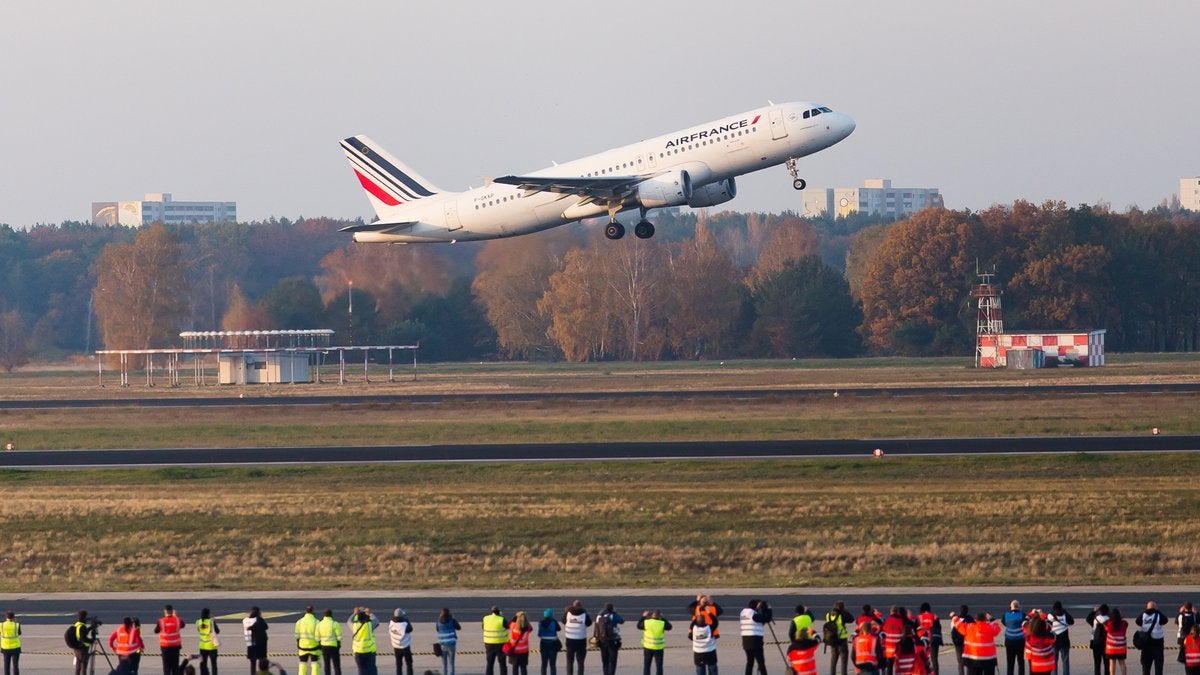Berlin’s Tegel airport: A love letter as it prepares to close
Tegel was held in great affection by many residents of West Berlin, for whom – especially during the Cold War years – it symbolised freedom and escape

Your support helps us to tell the story
From reproductive rights to climate change to Big Tech, The Independent is on the ground when the story is developing. Whether it's investigating the financials of Elon Musk's pro-Trump PAC or producing our latest documentary, 'The A Word', which shines a light on the American women fighting for reproductive rights, we know how important it is to parse out the facts from the messaging.
At such a critical moment in US history, we need reporters on the ground. Your donation allows us to keep sending journalists to speak to both sides of the story.
The Independent is trusted by Americans across the entire political spectrum. And unlike many other quality news outlets, we choose not to lock Americans out of our reporting and analysis with paywalls. We believe quality journalism should be available to everyone, paid for by those who can afford it.
Your support makes all the difference.The opening in late October 2020 of Berlin’s long awaited new airport – almost a decade late – marks the end of an era for Tegel.
Few airports have quite that cool retro feel of the original hexagonal terminal at Berlin’s Tegel airport. Forget the nasty clutter of outsized sheds which have disfigured Tegel in recent years, as the airport struggled to cope with increasing passenger numbers following the dismal failure of the airport authority to complete Berlin’s new airport on the other side of the city.
For years that unfinished new airport has made Berlin the butt of sharp remarks. But for many the silver lining in the cloud was that Tegel remained open long past its projected closing date. Tegel was held in great affection by many residents of West Berlin, for whom – especially during the Cold War years – it symbolised freedom and escape.
But Tegel was more than that. In its heyday in the 1960s and 1970s, it was a style icon that underpinned strong messages about West Berlin. This was Germany’s first drive-in airport. It was an adventure that paid homage as much to the automobile as it did to the aeroplane.
Following the construction of the Berlin Wall in 1961, Tegel was one of two commercial airports in isolated West Berlin. The other was Tempelhof, close to the city centre; it saw its last flights in 2008. Tegel, which opened in 1960, was very much larger than Tempelhof.
Tegel symbolized the fluid mobility of the West – it was an overstated retort to the grand boulevards of East Berlin. There was much talk in the western part of the city of Das Neue Berlin ("The new Berlin"), a phrase that found expression in bold architectural statements that played up mobility. The endless swirl of traffic around Ernst Reuter Platz and the uninterrupted flow of modern automobiles along the new city motorway both invited comparison with America.
But Tegel went further, creating ballet-like interactions between cars and planes. The highway from the heart of Berlin sweeps north-west over grand bridges, gliding into a tunnel – with planes taxiing above – to emerge in the interior of an open hexagon where passengers could be dropped off right at their departure gate. The walk from car to plane was just a matter of a few metres.
It was all utterly cinematic, but the celebrated Tegel hexagon wasn’t a design that stood the test of time. It wasn’t easy to expand, and in recent years the ambitious highways leading to the airport have often been so clogged with traffic that driving to Tegel has lost its romance.
Berlin’s new airport opens on 31 October. It is located on the south-eastern margins of the city, far from Tegel. It is in effect a redevelopment and massive expansion of East Berlin’s airport at Schönefeld. Tegel will remain open for just a week after the new airport opens. After Tegel closes, the site will be redeveloped for residential and business use.
But as the last plane climbs up from the runway at Tegel, there will be many Berliners who will shed a tear at the demise of an airport that once had an unrivalled elegance and functionality – even though in recent years it has too often seemed overcrowded and dysfunctional.
The authors are the publishers of ‘hidden europe,’ which is both a print magazine and an online corpus of travel writing, focusing on aspects of European travel, life and culture. Find out more at hiddeneurope.co.uk.



Join our commenting forum
Join thought-provoking conversations, follow other Independent readers and see their replies
Comments